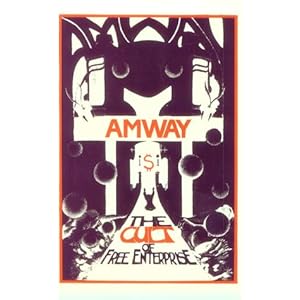Annotated Bibliography
Blakey, Robert G. Report of Professor G. Blakey. Notre Dame, In: n.p., 1986. Print.
Robert Blakey is a professor at Notre Dame Law and one of the leading experts on Organized Crime. Blakey was hired by P&G to write his professional opinion about Amway for the 1985 case between P&G v Amway: Professor Blakey was one of the lead writers of the Rico Law. In this article, Blakey defines organized crime as a syndicate and outlines multiple laws Amway had broke to compare Amway to the Mafia. Blakey also states how there are various families such as the De Vos & Van Andel Family that make the primary decisions of the organization. Although this article may be a little biased since it was designed as material against Amway by P&G, it is widely considered as objective material. This article is a great read on which families gain the most from Amway, how Amway’s strucutre is enticing toward breaking rules and regulations, and how it uses a large system of checks and balances to protect the main families from the action of the individuals; however in doing so, it creates a system of organized crime.

Amway: The Culture of Free Enterprise. Source: Amazon
Butterfield, Stephen. Amway, the Cult of Free Enterprise. Boston: South End, 1985. Print.
Stephen Butterfield’s explanation of Amway and it’s practices is one of the best explanations for Amway I have ever read. Stephen Butterfield writes that “Amway sells a marketing and motivational system, a cause, a way of life, in a fervid emotional atmosphere of rallies and political religious revivalism”. Stephen Butterfield was a former distributor of Amway and he compares Amway to religious propaganda stating that in it’s motivational materials, it constantly uses quotes from the bible. He states that Amway is a cult because of it’s ability to gain so many individuals who are willing to work for little to nothing other than the ideology of positive thought. It also explains some basic facts about Amway such as Amway and Quixtar being t he same entity.
Juth-Gavasso, Carol Lynn. Organizational Deviance in the Direct Selling Industry: A Case Study of the Amway Corporation. N.p.: n.p., 1985. Print.
Carol Lynn wrote this as her PHD Dissertation in Sociology from Western Michigan University and analyzed the shady business-practices of Amway. This article is excellent in factually tracking the net income of individuals at an early stage of Amway and the net loss faced by over 40% of individuals within one year of joining Amway. This article talks about the various motivation techniques of Amway and shows how they create a false sense of hope for metrics of success. The article also talks about how Amway imposes mandatory costs as ‘business expenses’ to individuals; after analyzing 20,000 recent Amway IBO’s earling over $14,000 through Amway, she finds that all of them faced over $1,000 in business expenses towards Amway that Amway fraudulently claimed as a tax-expense, and not an expense of the individual business owner.
Klepic, Jure. “The Amway Effect on Social Media Influencers.” The Huffington Post. TheHuffingtonPost.com, 17 Oct. 2012. Mon. 05 Nov. 2012. <http://www.huffingtonpost.com/jure-klepic/the-amway-effect-on-socia_b_1968423.html>.
Jure Klepic talks about how social networks such as Facebook and Twitter have become a vast networking opportunity for those in MLM’s. Jure talks about how while he enjoys Amway products, he doesn’t enjoy going on social networking to be constantly pestered about opportunities to become a part of a downline constantly. He parallels social media influencer success to mlm’s stating that the success is determined by having massive amounts of people follow you as an individual. He states that this therefore is also affecting social media by creating large amounts of connections that are non-quality connections.
Wu, Winston. “The Truth Behind the Smoke and Mirrors of Multi-Level and Network Marketing (and Those Who Say They Are Not Yet Operate Exactly like One).” N.p., May-June 2012. Mon. 5 Nov. 2012.
This article provides information about the nature of MLM’s, what an MLM consists of, how the different levels of network marketing work (uplines versus downlines). The article provides information on the nature of MLM’s blowing smoke by stating that the nature of an MLM is such that for some to be successful, a majority have to be unsuccessful. It provides the statistics that at least 50% of people will ultimately fail by definition, and a lot more will statistically fail. It concludes by stating that even if one does become wealthy of an MLM, they would be conscious of the fact that the process of becoming success means the failure of many others. An interesting point this article brings up is the notion

